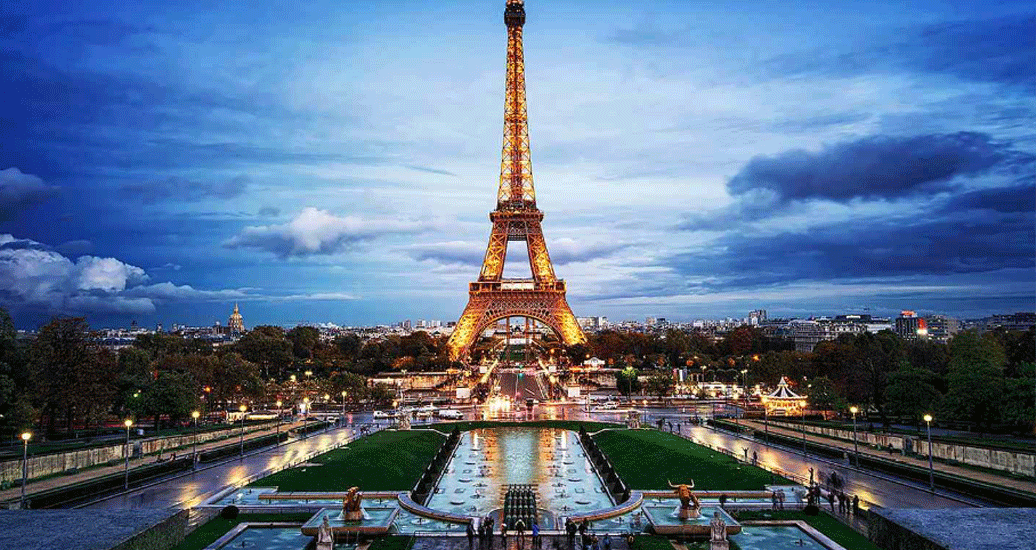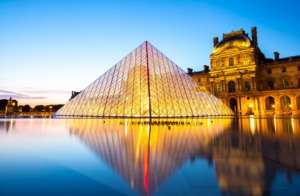The Eiffel Tower, one of the most iconic structures in the world, stands as a symbol of Paris and France’s cultural and architectural prowess. Erected on the Champ de Mars in the 7th arrondissement of Paris, the tower has become synonymous with the city’s skyline and is a testament to the ingenuity of its designer, Gustave Eiffel. With a rich history spanning over a century, the Eiffel Tower has evolved from a controversial and criticized project to a globally celebrated landmark, attracting millions of visitors each year.

The idea for the Eiffel Tower was conceived as part of the preparations for the 1889 Exposition Universelle, a world’s fair commemorating the 100th anniversary of the French Revolution. The French government announced a competition to design an iron tower that would serve as a centerpiece for the exhibition. Gustave Eiffel, a renowned civil engineer, and architect, emerged victorious with a design that was both innovative and controversial.
Construction of the tower began in 1887 and took just over two years to complete. It was an engineering marvel of its time, utilizing over 18,000 individual iron parts and more than 2.5 million rivets. The tower stands 324 meters (1,063 feet) tall and was, for several decades, the tallest man-made structure in the world. Its lattice structure, consisting of interconnected iron beams, was a departure from traditional architectural styles, sparking both admiration and criticism.

The Eiffel Tower officially opened to the public on March 31, 1889, during the Exposition Universelle. Despite initial skepticism and criticism from some prominent artists and intellectuals of the time, the tower quickly became a sensation. Its unique design, coupled with its impressive height, attracted visitors from around the world. Originally intended as a temporary structure, the Eiffel Tower’s popularity secured its permanent place in the Parisian landscape.
One of the remarkable features of the Eiffel Tower is its adaptability and functionality. Initially used as a broadcasting tower, the tower’s height made it an ideal location for antennas. Over the years, it has housed numerous broadcasting equipment, including radio and television transmitters. Additionally, the tower served as an observation point for the French military during World War I.

The Eiffel Tower’s allure is not limited to its structural beauty; it also serves as a symbol of technological progress. Gustave Eiffel incorporated cutting-edge engineering techniques of the time, including the use of iron and steel, to create a structure that was not only visually striking but also a testament to the advancements in materials and construction methods.
The tower’s aesthetic appeal is further enhanced by its nightly light displays. In 1985, the Eiffel Tower was equipped with thousands of sparkling lights that illuminate the structure for several minutes every hour after sunset. This mesmerizing light show has become an integral part of the tower’s identity and contributes to its enchanting allure.
Over the years, the Eiffel Tower has undergone several renovations and improvements to ensure its structural integrity and enhance the visitor experience. The elevators, which transport millions of visitors to the tower’s observation decks each year, have been upgraded, and safety measures continually improved.
The Eiffel Tower has played a significant role in various cultural and historical events. It has been featured in numerous films, literature, and works of art, cementing its status as a global cultural icon. The tower’s silhouette is instantly recognizable and is often associated with romance and the city of Paris itself.
Visitors to the Eiffel Tower can enjoy panoramic views of Paris from its observation decks, located at different levels. The first and second levels offer restaurants and shops, while the summit provides a breathtaking 360-degree view of the city. The observation decks have been witness to countless proposals, celebrations, and moments of reflection, making the Eiffel Tower a symbol of love and enduring memories.
In conclusion, the Eiffel Tower stands as a testament to human innovation, architectural brilliance, and cultural significance. From its controversial beginnings to its current status as an internationally recognized symbol, the tower has played a crucial role in shaping the identity of Paris and capturing the imagination of people worldwide. As it continues to stand tall over the city, the Eiffel Tower remains a timeless icon, blending art and engineering in a way that continues to inspire awe and admiration.


